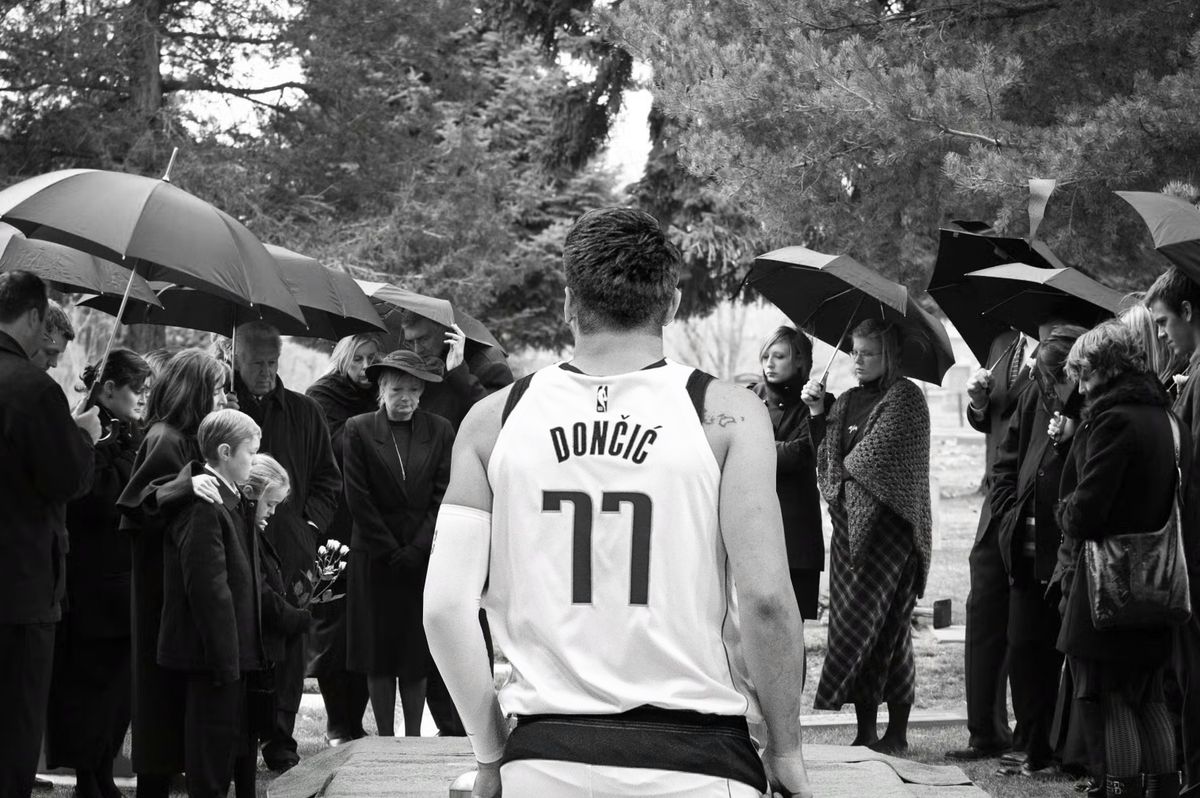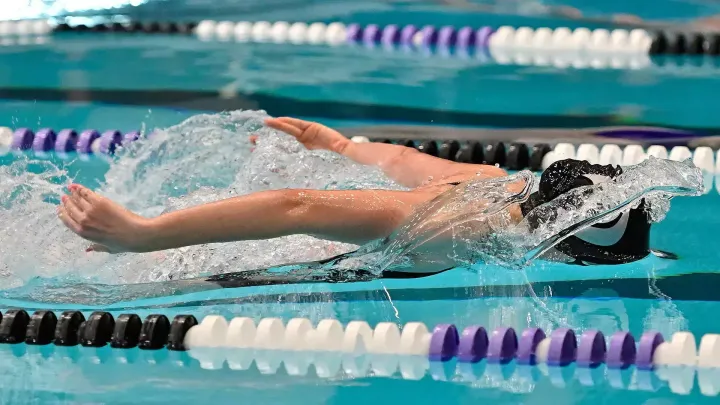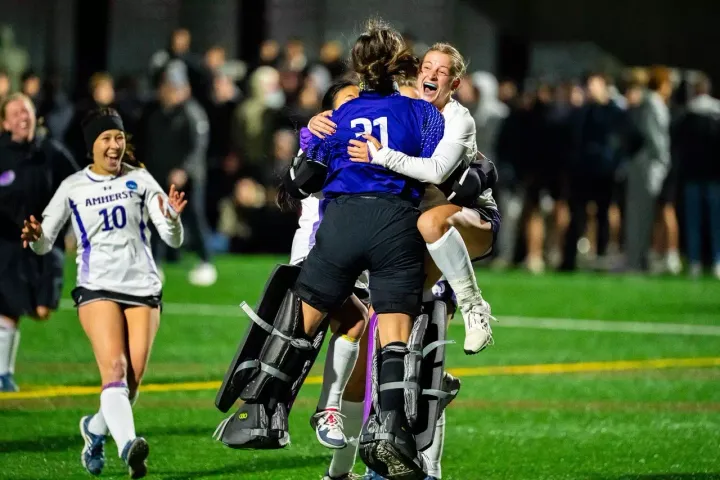How to Break a Fanbase: The Luka Doncic Trade
Managing Sports Editor Joey Supik ’27 offers insights behind the NBA trade that no one saw coming.

On Jan. 26, 2024, Luka Doncic scored 73 points against the Atlanta Hawks, the fourth most in NBA history. Missing only eight shots and one free throw, Doncic had the most efficient 70-point game ever, with a true shooting percentage of 91.2%. Doncic’s performance against the Hawks cemented his greatness in both the history books and in the eyes of fans. The franchise player the Mavericks had been waiting for since Dirk Nowitzki’s retirement was finally reaching his prime. Just over a year later, in a move that shocked the basketball world, the Mavericks have traded Doncic to the Los Angeles Lakers. What caused this sudden move by the Mavericks’ general manager? Why would they trade someone who many fans across the country viewed as an untouchable player? Who did they get in return for such a generational talent? Let’s look into the available details thus far.
On Jan. 7, Mavericks general manager Nico Harrison began a trade conversation with Lakers general manager Rob Pelinka. One could imagine Pelinka’s surprise when he was offered the opportunity to trade for Doncic, and these talks carried on until he was officially traded on Feb. 2. Harrison only engaged in trade talks about Doncic with Pelinka. According to ESPN, Harrison wanted to minimize Luka and his agent’s leverage in trade talks while avoiding fan backlash for the move. Thus, Harrison specifically picked out the trade he wanted with the Lakers and refused to open up to trade offers around the league.
For the Mavericks’ motive for moving on from their star, the biggest factor is reportedly Doncic’s physical conditioning. Doncic and the Mavericks have had a long-lasting feud over Doncic’s off-court habits and weight gains, trying to keep the star’s weight low and fitness level high. Regardless of this concern, Doncic is averaging 28.1 points per game, 8.3 rebounds per game, 7.8 assists per game, and two steals per game. Even if he was over 300 pounds, there’s no justification for trading away a generational talent with such absurd numbers.
Beyond Harrison’s disdain for Doncic’s fitness level, another factor for the trade likely has to do with Mark Cuban selling his majority stake in the franchise. Cuban sold ownership of the team in 2023 to the Adelson family, renouncing his involvement in the management of the team. Cuban’s strong affection for Doncic likely would have presented a problem for Harrison when dealing with the star player, so his leave created the perfect situation for Harrison to get a deal done.
So what exactly was the trade? The Lakers got Doncic, Maxi Kleber, and Markieff Morris. The Utah Jazz, a third-party team in the trade, got the Lakers’ Jalen Hood-Schifino and two second-round picks. The Mavericks received Anthony Davis, Max Christie, and a 2029 first-round pick from the Lakers. Who won the trade? Not the Mavericks, that is for certain.
Davis, a 31-year-old injury-prone superstar, currently averages 25.7 points per game, 11.9 rebounds per game, 3.4 assists per game, and 2.1 blocks per game. Davis has only played 63 or more games in a season once throughout his six-year Laker tenure. He has nine All-Star and five All-NBA selections throughout his 13-year career. While certainly not a bad pickup to any degree, he is much older than Luka and has a bad injury track record in recent years.
Max Christie and the first-round pick are non-factors in this trade. Christie averages 8.5 points per game, 2.7 rebounds per game, and 1.4 assists per game. The 2029 pick could end up valuable if Luka and the Lakers don’t reach a contract extension or Doncic leaves in free agency in 2027. Regardless, these two assets have very low potential to expand their value.
Meanwhile, the Lakers received two solid role players in Kleber and Morris. Again, their potential is low but could provide fine value in the short term. Then there’s Doncic, who has five consecutive All-Star and first-team All-NBA selections in only seven seasons. He boasts the league’s highest active career points per game average at 28.6. Last year, he led the Mavericks to the NBA Finals for the first time since 2011. Cementing his legacy as one of the best NBA players in the league today, Doncic is the best player to grace Dallas’ American Airlines Center since Dirk Nowitzki.
Nico Harrison entertaining the idea of trading Doncic, never mind actually going through with it, is absolutely insane. Doncic was eligible for a five-year, $345 million supermax extension this offseason, but the trade now removes that option from the table. To possibly trade away your franchise player because you were scared that he would eat too much of the finances is absurd. First, he eats food, not money, as Mavericks management has continually complained about. Second, you are supposed to pay your best players. It’s not a bad thing to make sure your game-changing players get adequately compensated for the success they bring to the team. It is unacceptable to trade away your best player for salary cap reasons when you have no means of replacing that talent in a timely fashion.
Overall, this trade has shocked the NBA community. The repercussions of trading Doncic will be long-lasting and wide-reaching. Lakers fans are rejoicing at their new franchise player for possibly the next decade, while Mavericks fans are still comprehending the loss. Hometown Dallas sports fan Taylor Hua ’28 commented on the trade, encapsulating the feelings of Mavericks fans across the country.
“As a Mavs fan, I’m nothing short of devastated … Many tears were shed, and I am still shell-shocked. The Mavs just lost an entire fan base.”




Comments ()